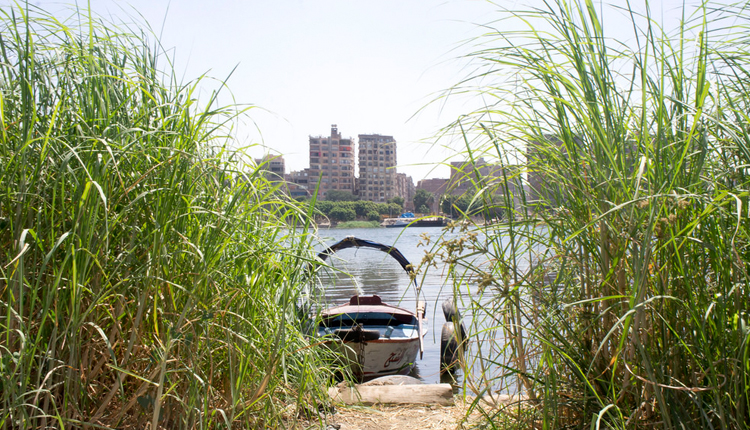Last week’s Cabinet decision to expropriate land on Warraq has provoked anger among the island’s residents. The decision to expropriate 100 metres of land along both sides of the Rod Al-Farrag Axis as it crosses the island, and to take 30 metres of land around the island’s shoreline to construct a corniche, was taken on 22 November and published in the official gazette four days later.
In a ministerial meeting held to follow up on the development of Warraq on Sunday, Prime Minister Mustafa Madbouli said the government “is working on turning Warraq island into a fully urbanised society”.
As part of the process of developing the island and upgrading services, Madbouly said forms had been distributed to all those affected by the urbanisation plan, offering them the choice of financial compensation, alternative housing in a new location or resettlement on the island once development plans are completed.
“How can they expect us to leave our homes,” asks Amina, a housewife in her 60s who was born on the island. The government, she says, should have built alternative houses on the island before beginning any demolitions.
“Let’s assume that I opt for resettlement on the island once the development plans are complete. Where will I live in the meantime, and what guarantees are in place that I really will be allocated a place in the newly developed area,” asks Mohamed Basa, aka Hamasa, a 27-year-old resident of Warraq.
Last year the island’s inhabitants elected a council to represent their interests and negotiate with the government.
The council has filed a lawsuit contesting a government decree issued earlier this year identifying parts of the island earmarked for the building of new urban communities but the case was adjourned last week by the State Council Administrative Court. The next hearing is scheduled for 22 December.
Abdel Fattah al-Sisi, a 65-year-old plumber with four children, was born on the island, as was his father and grandfather.
“I built our house more than 50 years ago. We have meters for water and electricity and we pay the bills every month. Yet like many other residents of the island I can’t sleep at night due to anxiety, fear of what tomorrow holds,” says Abdel Fattah al-Sisi.
Warraq lies opposite Shobra Al-Kheima. It covers 1,400 feddans and is home to 90,000 people. It has three schools, a public hospital, police station, tens of mosques and a church. No bridges connect it to the banks of the river, leaving the islanders to depend on five ferries.
The struggle between the island’s residents and the state began in 2017. During a conference on land reclamation in June 2017 President Abdel-Fattah Al-Sisi referred to Warraq without naming it: “There is an island in the middle of the Nile,” he said, “that stretches over 1,250 feddans.
Chaos has spread and people have been building on land that they seized. Now there are 50,000 houses there. Where does their sewage go? It goes into the Nile water which we drink.”
Security forces arrived on the island in July 2017 to oversee the demolition of buildings illegally constructed on state land but were met with resistance from the island’s inhabitants. In the ensuing clashes one person was killed and dozens injured and the police managed to carry out just 30 out of 700 demolition orders.
In the face of such fierce resistance on the part of residents meetings were held during which Major General Kamel Al-Wazir, head of the Armed Forces Engineering Authority, promised that anyone who lost property because of development plans would receive compensation or alternative accommodation.
According to Al-Wazir, residents will receive 1,400 pounds per metre of land they lose or alternative accommodation in one of the social housing projects in Moqattam. The island’s residents, however, say the compensation is a fraction of the true value of their land.
“The government’s compensation offer is far less than the land’s real worth. It’s likely they want to develop the island for tourism or speculative construction yet what they are offering is not enough for us to buy a house to replace the home we will lose,” Yehia Al-Maghrabi, a member of the residents’ council, told Al-Ahram Weekly.
Al-Maghrabi said the council has been in negotiations with the government for more than a year and half yet still no one knows what the government’s development plan for the island involves.
“We didn’t oppose the government’s decision two years ago to seize 38 feddans to make way for the Rod Al-Farrag Axis. We offered our help. During negotiations we agreed with officials that eight metres either side of the Rod Al-Farrag Axis could be taken but then they issued a decree taking 100 metres from each side which means 500 houses will be demolished.”
Source: Ahram Online



